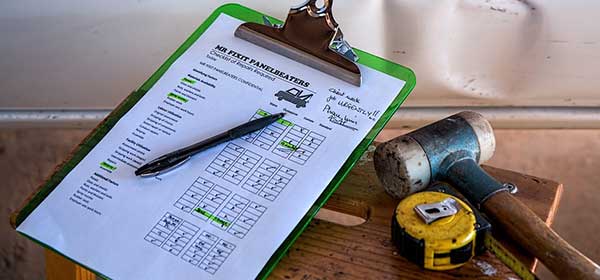| As a homeowner, you never run out of things to do. Just keeping up with your home maintenance to-do list can seem like a chore itself, and if you fall behind, it could cost you in the long run. To help you stay more on top of those important chores, here’s a handy guide to help you get organized as the seasons change. |

Image courtesy of Pixabay |
| Prevent frozen pipes. When water freezes, it expands and puts pressure on pipe walls. In turn, the pressure could cause pipes to burst, resulting in costly damage to your home. The Red Cross offers these suggestions to keep your pipes from freezing: |
Outdoors: Disconnect and drain hoses before storing them. Close valves that supply water to spigots, then open the spigots to drain them. Leave the spigots open so they can expand if there is residual water inside.
Indoors: Add insulation to crawl spaces, attics and basements to keep these areas warmer. You can also add insulation to the pipes themselves. Pipes on exterior walls that don’t have as much warm air circulating are perfect candidates for extra insulation. Consider adding pipe insulation to pipes in the garage and inside cabinets in your kitchen and bathrooms. |
Clean gutters. Many professionals advise that fall is an ideal time to clean debris from gutters. Obstructed gutters can cause many costly problems: - The dams in gutters cause water and ice to pool, and the gutters can become too heavy and break away from the house.
- Water that doesn’t flow out of the gutter through downspouts may overflow from the sides, causing flooding issues.
- Water that pools under clogged gutters can seep into your home’s foundation, which can then freeze and crack the foundation.
|
| Smoke and carbon monoxide detectors. Properly tending to your smoke and carbon monoxide detectors could save your life. Here are some guidelines from the professionals at FixdRepair: |
Smoke detectors:- Put new batteries in your smoke detector at least once per year. Then, test the alarm by pressing the button for five seconds or until the alarm beeps three times.
- Retest each device monthly.
- Replace your smoke detector every 10 years.
- Never use water or cleansers on your smoke detectors.
- Vacuum the device every six months.
Carbon monoxide detectors:- Put new batteries in your carbon monoxide detectors at least once per year. Have the new batteries ready when you remove the old ones. Then, test the alarm by pressing the button until it beeps.
- Retest devices weekly.
|
| Radon testing. It’s ideal to test your home for radon before the winter months when you will be spending more time inside. You can purchase a radon testing kit from most hardware stores. Experts recommend hiring a qualified contractor if your home tests at a radon level of four or above. |
Clean dryer vents. Accumulated lint in your dryer vent lowers the efficiency of the machine and is a fire hazard. You can clean it by following these steps:- Disconnect the machine from it’s power source.
- Pull the unit away from the wall to reach the hose.
- Loosen the hose clamp.
- Vacuum the dryer hose; a shop vac is recommended for this type of job rather than a model built for floors not only because it has more suction power, but also because it can vacuum up water if your dryer hasn’t been working properly. You can also use a brush made for dryer hoses if there isn’t a lot of accumulated lint.
- Replace the hose and clamp.
- Set the machine back into place and reinstate power
|
| Change furnace filters. Changing filters is a simple way to save money on energy bills and extend the life of your furnace. Experts at Global News state that “in order to keep it working to its optimal performance — and help prevent a possible malfunction — you need to either change or clean your furnace filter on a regular basis |
| Grab your toolbox and go! Keeping up with home maintenance can be a chore, but by following these guidelines, you’ll save money and stay organized. Check your pipes and take steps to ensure they won’t freeze. Clean gutters to avoid costly damage. Check your smoke and carbon monoxide detectors to keep your family safe, and make sure radon isn’t a problem. Clean your dryer vent and change furnace filters to keep machines running efficiently and save money. By following these simple steps, you’ll be ready for winter in no time. |